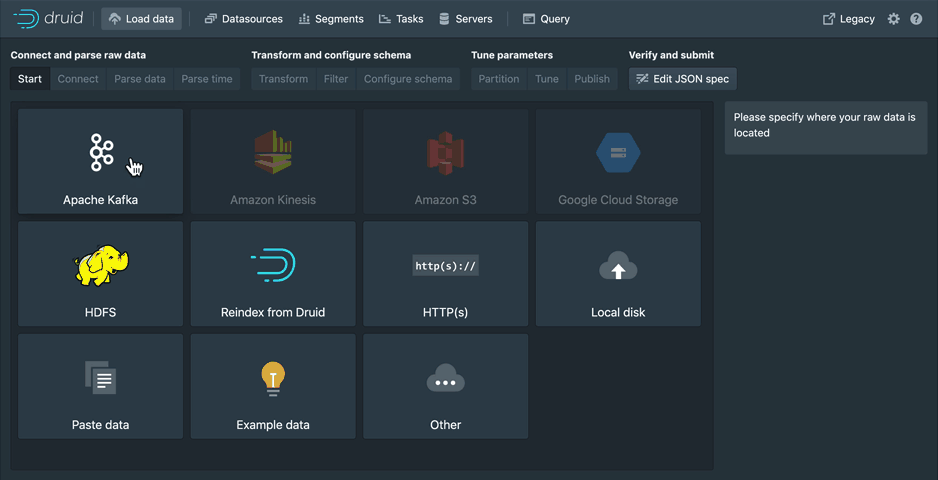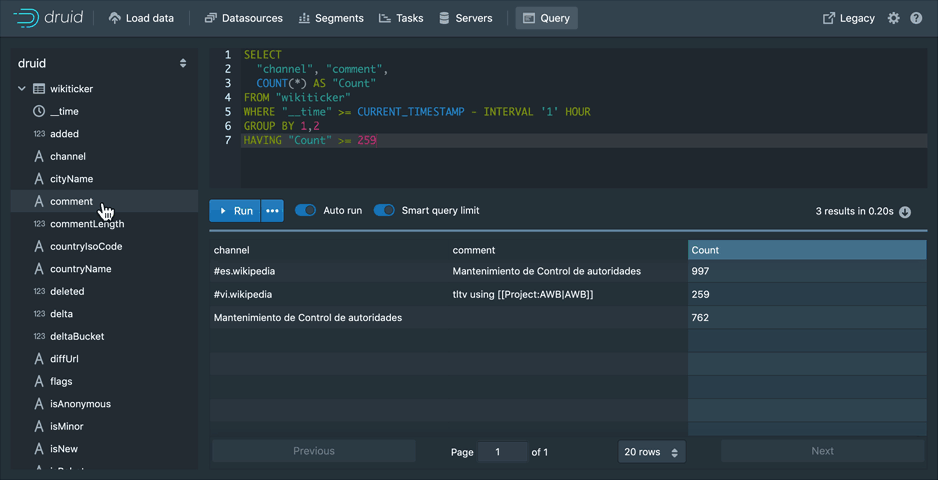* Various documentation updates.
1) Split out "data management" from "ingestion". Break it into thematic pages.
2) Move "SQL-based ingestion" into the Ingestion category. Adjust content so
all conceptual content is in concepts.md and all syntax content is in reference.md.
Shorten the known issues page to the most interesting ones.
3) Add SQL-based ingestion to the ingestion method comparison page. Remove the
index task, since index_parallel is just as good when maxNumConcurrentSubTasks: 1.
4) Rename various mentions of "Druid console" to "web console".
5) Add additional information to ingestion/partitioning.md.
6) Remove a mention of Tranquility.
7) Remove a note about upgrading to Druid 0.10.1.
8) Remove no-longer-relevant task types from ingestion/tasks.md.
9) Move ingestion/native-batch-firehose.md to the hidden section. It was previously deprecated.
10) Move ingestion/native-batch-simple-task.md to the hidden section. It is still linked in some
places, but it isn't very useful compared to index_parallel, so it shouldn't take up space
in the sidebar.
11) Make all br tags self-closing.
12) Certain other cosmetic changes.
13) Update to node-sass 7.
* make travis use node12 for docs
Co-authored-by: Vadim Ogievetsky <vadim@ogievetsky.com>
Website | Documentation | Developer Mailing List | User Mailing List | Slack | Twitter | Download
Apache Druid
Druid is a high performance real-time analytics database. Druid's main value add is to reduce time to insight and action.
Druid is designed for workflows where fast queries and ingest really matter. Druid excels at powering UIs, running operational (ad-hoc) queries, or handling high concurrency. Consider Druid as an open source alternative to data warehouses for a variety of use cases. The design documentation explains the key concepts.
Getting started
You can get started with Druid with our local or Docker quickstart.
Druid provides a rich set of APIs (via HTTP and JDBC) for loading, managing, and querying your data. You can also interact with Druid via the built-in console (shown below).
Load data
Load streaming and batch data using a point-and-click wizard to guide you through ingestion setup. Monitor one off tasks and ingestion supervisors.
Manage the cluster
Manage your cluster with ease. Get a view of your datasources, segments, ingestion tasks, and services from one convenient location. All powered by SQL systems tables, allowing you to see the underlying query for each view.
Issue queries
Use the built-in query workbench to prototype DruidSQL and native queries or connect one of the many tools that help you make the most out of Druid.
Documentation
You can find the documentation for the latest Druid release on the project website.
If you would like to contribute documentation, please do so under
/docs in this repository and submit a pull request.
Community
Community support is available on the druid-user mailing list, which is hosted at Google Groups.
Development discussions occur on dev@druid.apache.org, which you can subscribe to by emailing dev-subscribe@druid.apache.org.
Chat with Druid committers and users in real-time on the Apache Druid Slack channel. Please use this invitation link to join and invite others.
Building from source
Please note that JDK 8 or JDK 11 is required to build Druid.
See the latest build guide for instructions on building Apache Druid from source.
Contributing
Please follow the community guidelines for contributing.
For instructions on setting up IntelliJ dev/intellij-setup.md







